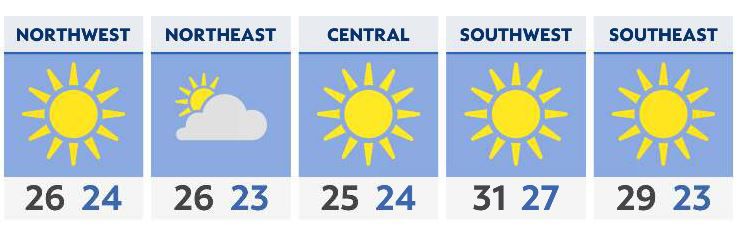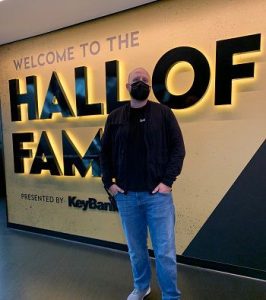DAYTON, Ohio — The Dayton Police Department has found that two of its officers did not violate policy when forcibly removing a parapelegic man from a car following a traffic stop in late September of last year.
What You Need To Know
- Dayton police officers pulled over Clifford Owensby on Sept. 30, 2021 in connection to a suspected drug case
- Owensby, who is paraplegic, cited fears of safety as a reason to refuse to get out of his car during the traffic stop
- Two Dayton police officers were recorded forcibly removing Owensby from his car and carrying him to the police cruiser
- Owensby filed a complaint against the officers; the officers were exonerated of the most serious charges, including use of force
Dayton’s new Police Chief Kamran Afzal joined City Manager Shelley Dickstein in City Commission Chambers at City Hall on Tuesday to release the 27 pages worth of findings related to the case involving Clifford Owensby.
Afzal, who started in late December, said the findings from the city’s Professional Standards Bureau showed that both the request for a free-air K9 search of the vehicle and the traffic stop on Sept. 30, 2021, did not violate the department’s policy. The bureau handles internal investigations of the department, similar to an internal affairs office.
“In addition to departmental policy requiring Mr. Owensby to be out of his vehicle during the canine free-air sniff, case law allows for an officer to get a driver out of their vehicle during a lawful traffic stop,” states the review, which was signed by Lt. Eric R. Sheldon on Friday.
The two officers — Officer Wayne M. Hammock Jr. and Officer Vincent J. Carter — were also exonerated for their physical handling of Owensby to get him out of the vehicle and into the police cruiser.
Afzal said the review found that Hammock and Carter did violate policies related to muting of body camera use. One of the officers was also written up for making an unprofessional comment to another officer, the chief said. He didn’t indicate any specifics about the officer’s comments.
As a result of the review findings, the officers will not face additional penalties related to the incident, Afzal said. Each did receive what the department calls a training memorandum for their respective violations.
Afzal wouldn’t go so far as to issue an apology, but he did say he felt for all parties involved, including a 3-year-old child who was in the car at the time of the incident.
“I feel bad for the child, I feel bad for Mr. Owensby. I feel bad for the officers for being under the microscope for months and months, based on the training we’ve given them,” he said.
Afzal also said that his agency would go through Americans with Disabilities Act (ADA) training to ensure the department’s training and policies are legal and treat people with respect.
Carter told the review body that he had not received departmental training on how to move a person who is paraplegic from the ground to a cruiser. He said he wasn’t aware of any such policy to address that situation.
The Professional Standards Bureau also recommended new policy and training for Dayton police officers in interacting with people with disabilities. Mayor Jeffrey Mims Jr. added that the new chief has also requested a review of current policies and training with a focus on how the Dayton Police Department can do a “better job of engaging with citizens with mobility limitations.”
Background
The review stems from an daytime incident that occurred nearly five months ago.
Shortly after noon on Sept. 30, Clifford Owensby was pulled over at West Grand and Ferguson avenues as part of what the department called a drug-related investigation in the area. According to reports, a 3-year-old child was sitting in the backseat of the car at the time of the traffic stop.
Officers report they pulled Owensby over on suspicion of a tinted window violation. Hammock said he tested the window tint of the front passenger window. It was 20% tinted, but well below the legal 50% limit.
Hammock and Carter said they found a black bag in the car with $22,000 inside. In his statement, Owensby said the money was his savings.
During a roughly 11-minute body-camera video of the incident, the two responding DPD officers commanded Owensby to exit the vehicle. They said “due to his history,” they needed Owensby to be outside of the car, so a K9 officer could go through the vehicle. Owensby said he could not get out of the car because he is parapelegic.
Officers said they told Owensby they would help him out of the car, but the 39-year-old refused. Owensby, in turn, asked the officers to call their supervisor, which he called a “white shirt,” a reference to the uniform color of a Dayton Police Department supervisor.
“I stated to (one of the officer’s) them that I was a paraplegic and that I wanted to talk to a white shirt to ensure my safety when getting out of the vehicle, due to me not having my wheelchair at hand,” Owensby said in the statement attached to his Professional Standards Bureau Complaint Form.
When asked about it by the officers, Owensby said his wheelchair was in the driveway. He said he receives help getting in and out the vehicle from his children.
The video shows the officers then told Owensby that if he didn’t agree to exit the vehicle they would have to forcibly remove him. Officers are seen on camera pulling him from the vehicle — Owensby said one of the officers grabbed him by his hair — and then moved him to the ground to handcuff him. He was then placed inside the police cruiser.
Owensby can be heard on video saying the officer was hurting him.
“They then proceeded to pull me out of the car and drug me (halfway) into the middle of the street and slammed me onto the ground while my son watched from the back seat crying and scared,” he said. He added that one of the officers “knelt on my back and forced my arms behind me while pushing my face towards the ground yelling to stop resisting.”
A witness to the incident recorded it on their cell phone and uploaded it to social media. The video went viral and led to outrage locally and far from home.
“This person who’s pulled over thinking he’s going to get a tinted-window ticket is now being pulled from his vehicle by his hair,” said Dr. Derrick L. Foward, president of the Dayton Unit of the NAACP, said at the time. “All you’ve got to do is listen to the tone of the officers to see who was really compliant and who was really aggressive.”
Incident review
In reviewing the incident, the Professional Standards Bureau justified the stop for the tint window investigation. They also determined Hammock was justified in requesting a narcotics-detecting dog to conduct the free-air sniff.
The findings held that “no probable cause or reasonable suspicion was necessary” in the situation, as long as it didn’t “prolong the time reasonably required to complete the mission of issuing a ticket for the violation.” Citing body camera video, the standards bureau said the K9 officer arrived on scene just over seven minutes after the traffic stop began. The review body cited the U.S. Supreme Court ruling in “Rodriguez v. United States” as part of their determination.
“As evidenced by Officer Carter’s (body-worn camera), Officer Carter was still in the process of actively writing Mr. Owensby’s traffic citations when he exited his cruiser to assist Officer Hammock. Therefore, the request for a narcotics detecting canine did not prolong the time reasonably required to complete the mission of issuing citations for the violations,” the review reads.
The findings noted that in addition to departmental policy requiring Owensby to be out of the vehicle during the canine free-air sniff, “case law allows for an officer to get a driver out of their vehicle during a lawful traffic stop.”
The review found that Hammock and Carter’s physical handling of Owensby was acceptable given the circumstances.
“Based on these factors, Officer Hammock’s and Officer Carter’s minimal force, in the form of pulling Mr. Owensby from the vehicle and wrestling him to get him in handcuffs, was justified, proper and in compliance with (department policy),” per the review. The reviewer added that Hammock’s decision to pull Owensby by his hair “may have been visually offensive to some people, but in reality the hair pulling was on the low end of the force spectrum and did not cause injury.”
While the outcomes and actions may be justified by the review board, Mims feels there’s still room for improvement.
“All Dayton residents should feel that they are treated with dignity and respect, and I know that the incident between Clifford Owensby and Dayton Police fell short of that standard. It fell below my expectations as well,” he said.
The Dayton city government and Dayton Police Department have worked with residents since the summer of 2020 on a variety of police reforms aimed at improving community-police relations.
In his statement, Mims said that Dayton City Commission has been working for more than 18 months to “address systemic issues that may create a lack of trust between community and the police. Many of those recommendations — including a new de-escalation policy and training, the creation of an independent accountability auditor, and the creation of a non-police responder for non-violent calls — are already completed or in progress.
“We can do better, and I am committed to continuing that work in Dayton and working to strengthen the community-police relationship,” Mims added. “I remain optimistic that we are on the path to creating the right conditions to build a stronger community relationship with Dayton Police. This relationship is critical for our city, and is one that I and my colleagues are committed to continue to address.”
About the review process
Traditionally, the Professional Standards Bureau handles complaints about the Dayton Police Department or its officers. However, “internal leadership” made the decision that an outside law enforcement should conduct the investigation into the Owensby incident, according to Barb Doseck, the city’s law director.
She said the city “made numerous attempts” to find a third-party to look into the matter, but they ultimately failed to find anyone to take it on.
Doeseck said they hired an outside legal firm, Frost Brown Todd, to provide an outside review of the investigation and its outcome.
“Richard Moore, who served as outside counsel, had access to the PSB investigation in real time. Because the investigation was under my authority, he also had the opportunity to make requests for information as needed, Doseck said. She added that because Owensby filed a civil lawsuit against the city of Dayton, Moore’s work product is “privileged and will remain so.”
Moore and the city’s law and human resources departments also reviewed the recommendations by the Professional Standards Bureau, Doseck said. She said “a consensus was met.”




